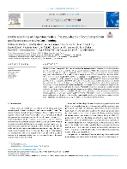| dc.contributor.author | Patiño, William R. | |
| dc.contributor.author | Vlček, Ondřej | |
| dc.contributor.author | Bauerová, Petra | |
| dc.contributor.author | Belda, Michal | |
| dc.contributor.author | Bureš, Martin | |
| dc.contributor.author | Eben, Kryštof | |
| dc.contributor.author | Fuka, Vladimír | |
| dc.contributor.author | Geletič, Jan | |
| dc.contributor.author | Jareš, Radek | |
| dc.contributor.author | Karel, Jan | |
| dc.contributor.author | Keder, Josef | |
| dc.contributor.author | Krč, Pavel | |
| dc.contributor.author | Radović, Jelena | |
| dc.contributor.author | Řezníček, Hynek | |
| dc.contributor.author | Šindelářová, Adriana | |
| dc.contributor.author | Resler, Jaroslav | |
| dc.date.accessioned | 2025-03-03T06:17:13Z | |
| dc.date.available | 2025-03-03T06:17:13Z | |
| dc.date.issued | 2024 | |
| dc.identifier.uri | https://hdl.handle.net/20.500.14178/3011 | |
| dc.description.abstract | The development of integrated urban services requires the implementation of informative tools that provide a balance between quality, time and costs for air quality assessment. Within this framework, three modeling techniques with different levels of complexity were compared during a winter inversion episode against PM10 10 concentrations measured in a built-up area in Prague (Czech Republic) characterized by heavy traffic. Although the Gaussian model ATEM satisfied the common statistical-performance criteria, the predictions poorly represented the spatial variability of concentrations in the study domain. The Lagrangian model GRAL provided a better simulation of the effects of terrain and vortice formation inside street canyons, but tended to overpredict the influence of these phenomena. Finally, the most sophisticated of the three models, the Large-Eddy Simulation model PALM, demonstrated the best performance based on an exhaustive analysis of the model outputs in the temporal and spatial dimensions. After model comparison, a sensitivity test of the selected models to the driving meteorology and emissions inputs was carried out. While advanced models can simulate complex urban environments, their suitability for use in urban planning is subject to further considerations, such as computational cost, user expertise, and the usefulness of the output. Thanks to increasing computation power and intensive work on the entire modeling chain, sophisticated models could become routine tools for use in regulatory applications, contributing to future integrated urban service provision. | en |
| dc.language.iso | en | |
| dc.relation.url | https://doi.org/10.1016/j.buildenv.2024.111892 | |
| dc.rights | Creative Commons Uveďte původ 4.0 International | cs |
| dc.rights | Creative Commons Attribution 4.0 International | en |
| dc.title | On the suitability of dispersion models of varying degree of complexity for air quality assessment and urban planning | en |
| dcterms.accessRights | openAccess | |
| dcterms.license | https://creativecommons.org/licenses/by/4.0/legalcode | |
| dc.date.updated | 2025-03-03T06:17:13Z | |
| dc.subject.keyword | Dispersion modeling | en |
| dc.subject.keyword | Particulate matter | en |
| dc.subject.keyword | Air pollution | en |
| dc.subject.keyword | Urban climate | en |
| dc.subject.keyword | Microscale | en |
| dc.subject.keyword | | en |
| dc.identifier.eissn | 1873-684X | |
| dc.relation.fundingReference | info:eu-repo/grantAgreement/TA0/TO/TO01000219 | |
| dc.relation.fundingReference | info:eu-repo/grantAgreement/TA0/SS/SS02030031 | |
| dc.relation.fundingReference | info:eu-repo/grantAgreement/UK/COOP/COOP | |
| dc.date.embargoStartDate | 2025-03-03 | |
| dc.type.obd | 73 | |
| dc.type.version | info:eu-repo/semantics/publishedVersion | |
| dc.identifier.doi | 10.1016/j.buildenv.2024.111892 | |
| dc.identifier.utWos | 001292388700001 | |
| dc.identifier.eidScopus | 2-s2.0-85200575213 | |
| dc.identifier.obd | 656960 | |
| dc.subject.rivPrimary | 10000::10500::10509 | |
| dc.relation.datasetUrl | https://doi.org/10.5281/zenodo.10655033 | |
| dcterms.isPartOf.name | Building and Environment | |
| dcterms.isPartOf.issn | 0360-1323 | |
| dcterms.isPartOf.journalYear | 2024 | |
| dcterms.isPartOf.journalVolume | 264 | |
| dcterms.isPartOf.journalIssue | říjen 2024 | |
| uk.faculty.primaryId | 116 | |
| uk.faculty.primaryName | Matematicko-fyzikální fakulta | cs |
| uk.faculty.primaryName | Faculty of Mathematics and Physics | en |
| uk.department.primaryId | 1290 | |
| uk.department.primaryName | Katedra fyziky atmosféry | cs |
| uk.department.primaryName | Department of Atmospheric Physics | en |
| dc.type.obdHierarchyCs | ČLÁNEK V ČASOPISU::článek v časopisu::původní článek | cs |
| dc.type.obdHierarchyEn | JOURNAL ARTICLE::journal article::original article | en |
| dc.type.obdHierarchyCode | 73::152::206 | en |
| uk.displayTitle | On the suitability of dispersion models of varying degree of complexity for air quality assessment and urban planning | en |

